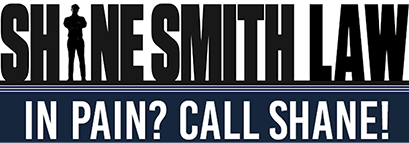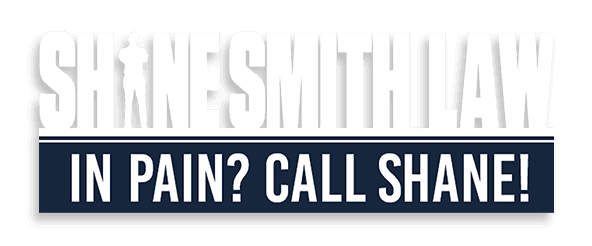Understanding the "100 Deadliest Days of Summer"
As summer unfolds, the term "100 Deadliest Days" becomes a critical conversation starter among safety advocates. This period, stretching from Memorial Day to Labor Day, is marked by a disturbing spike in traffic-related fatalities. Studies by organizations such as the National Highway Traffic Safety Administration (NHTSA) reveal a tangible increase in road incidents during these months. The reasons behind this surge are multifaceted, ranging from increased travel to teen driving patterns. By delving into the data, we uncover patterns that not only raise concern but also highlight the urgent need for preventive measures. For instance, the NHTSA reports a significant percentage jump in traffic fatalities during these months compared to other times of the year, underscoring the critical nature of this issue.
High-Risk Groups: Teen Drivers and Young Adults
The youthful exuberance of teen drivers and young adults often comes with a price during the summer. This demographic is disproportionately affected by the seasonal rise in traffic incidents. Behavioral factors such as a propensity for risk-taking, coupled with a lack of driving experience, contribute to their vulnerability. Summer break provides teens with more opportunities to drive, often leading to an uptick in inexperienced drivers on the road. This, combined with a tendency towards distracted driving, such as texting behind the wheel, exacerbates the risk. Understanding these behavioral tendencies is crucial in developing targeted safety campaigns and interventions aimed at protecting our youth during these perilous days.
Vacation Season and Increased Travel
The allure of summer vacations is undeniable, with millions hitting the road in pursuit of leisure and adventure. This influx of travelers significantly increases traffic volumes, creating a breeding ground for potential accidents. Highways become congested with vehicles, many of which are driven by individuals unfamiliar with the local roads. This unfamiliarity can lead to navigational errors and sudden maneuvers, increasing the likelihood of collisions. Moreover, the sheer excitement of reaching a vacation destination can sometimes lead to drivers neglecting the basics of road safety, such as adhering to speed limits and maintaining a safe following distance.
Recreational Activities and Alcohol Consumption
Summer is synonymous with celebrations, from Fourth of July fireworks to backyard barbecues. However, these festive occasions often involve alcohol consumption, which has a direct correlation with the rise in DUI incidents during this time. The relaxed atmosphere of summer can unfortunately lead to relaxed attitudes towards drinking and driving. The statistics are sobering, with a notable percentage of summer traffic fatalities linked to alcohol impairment. Recognizing the role that social gatherings and holiday festivities play in these statistics is essential in crafting effective public safety messages and interventions.
Law Enforcement Initiatives
In response to the summer safety crisis, law enforcement agencies ramp up their efforts to keep roads safe. Initiatives such as DUI checkpoints, increased patrols, and speed enforcement operations become more prevalent. These measures serve as both a deterrent and a method of immediate intervention. Police departments often collaborate with organizations like Mothers Against Drunk Driving (MADD) to amplify their message and reach a wider audience. The presence of law enforcement on the roads during these critical days sends a clear message to drivers: safety is non-negotiable, and the consequences of reckless driving are severe.
Public Awareness Efforts
Alongside law enforcement, public awareness campaigns play a pivotal role in combating the dangers of summer driving. National programs, such as the "Click It or Ticket" seatbelt initiative, and local community outreach efforts aim to educate drivers about the risks. These campaigns use a mix of traditional and social media to disseminate their messages, often featuring real stories of individuals affected by summer traffic incidents. By personalizing the issue and providing actionable advice, such as planning sober rides home and recognizing the signs of fatigue, these efforts strive to foster a culture of safety and responsibility on the road.
Emotional and Economic Toll
The repercussions of traffic fatalities during the "100 Deadliest Days" extend far beyond the accident scenes. Families and communities are left grappling with the emotional devastation of losing loved ones. The grief and trauma can ripple through a community, leaving a lasting impact. Economically, the costs are staggering, with expenses related to medical care, lost productivity, and emergency services placing a heavy burden on society. Personal stories of loss and resilience often emerge, painting a poignant picture of the human cost of these tragedies. These narratives serve as powerful reminders of the importance of road safety and the collective responsibility to prevent such losses.
Support Systems and Coping Mechanisms
In the wake of tragedy, support systems become a lifeline for those affected by summer traffic fatalities. Communities and organizations offer a range of resources, from grief counseling to support groups, providing a space for healing and connection. Initiatives like victim assistance programs help families navigate the aftermath of an accident, offering guidance on legal, financial, and emotional matters. These support networks are crucial in helping individuals and communities cope with the loss and find a path forward. By highlighting these resources, we can ensure that those touched by summer road tragedies are not left to face their journey alone.
Best Practices for Drivers
Staying safe on the road during the summer months requires vigilance and adherence to best practices. Drivers are encouraged to engage in vehicle maintenance checks before embarking on long trips, ensuring that tires, brakes, and engines are in optimal condition. Defensive driving techniques, such as maintaining a safe distance from other vehicles and being aware of one's surroundings, are more critical than ever. Planning routes in advance, taking regular breaks to combat fatigue, and avoiding peak travel times can also mitigate the risks. By adopting these practices, drivers can contribute to a safer driving environment for everyone.
Role of Technology in Improving Safety
Advancements in technology offer promising tools for enhancing road safety during the "100 Deadliest Days." Driver assistance systems, such as automatic emergency braking and lane departure warnings, are becoming more prevalent and can significantly reduce the risk of collisions. Smartphone apps designed to prevent distracted driving, such as those that disable text messaging while on the move, are another layer of defense. Moreover, navigation apps can help drivers avoid congested routes and provide real-time traffic updates. Embracing these technological aids can be a game-changer in the quest to reduce summer traffic fatalities.
Shane Smith Law Is Here for You This Summer
As we navigate the challenges of the "100 Deadliest Days of Summer," it's crucial to remember that safety is a collective responsibility. At Shane Smith Law, we are dedicated to providing support and legal guidance to those affected by car accidents. If you or a loved one has been impacted by a summer traffic incident, our experienced team is here to help you understand your rights and options. Contact us to learn more about how we can assist you in these trying times. Together, we can make a difference and ensure a safer summer for all.
Shane Smith Law is available by phone at (980) 246-2656 or you can always send us a message online.


-copy-7[2].2404081746550.jpg)
